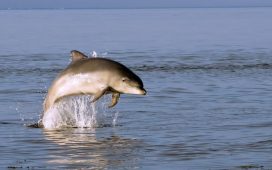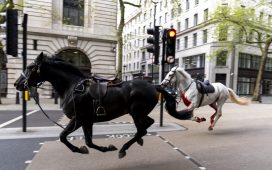The sun shone on the marina, the breeze gentled onshore. John Beatty, my friend of 40 years, with whom I’ve shared adventures from Welsh cliffs and wintry Derbyshire moors to Canada’s high Arctic, eased his 31-foot Pacific sailboat out of its berth. It was 30 years since we’d been on this water together.
On a falling tide we puttered between buoys, heading for auk colonies on the south coast of the Llŷn peninsula. Cap’n Beatty had promised me razorbills, common and black guillemots, and puffins.
Our first destination was St Tudwal’s Islands. We headed south-west across the bay. Glittering small waves, white flecked, scumbled the clear blue glaze of the sea. Rafts of guillemots drifted by, an occasional razorbill among them.

We hove to close inshore just south of St Tudwal’s East, peering into an apsidal cave recess whose inner sanctum was alive with kittiwakes. There was something ecclesiastical about the scene, the cliff architecture cathedral-like, the bird ledges packed tight as any pew with pale-and-black-surpliced choristers whose plainsong growled and mewed in swelling rhythms.
While the innermost, more dramatic and sheltered perches are kittiwake domain, the outer ones are the preserve of guillemots, which are some of my favourite birds. Their upright postures, their chi-chi plumage of mouse-brown and white, their clamorous sociability and variety of calls, their waddle-footed crowding on to the narrowest ledges, their enormous, finely individuated eggs that are designed not to roll off sloping rock, all contribute to their appeal. They coexist peacefully with the kittiwakes, sharing territory according to suitability. By each social group, at a small distance, ominously, the predatory presence of a great black-backed gull could be observed.

The same domestic disposition was repeated when we paused under the massive loose cliffs of Cilan Head, where bird-limed rock revealed cubist beauties of structure and form. A pair of harbour porpoises arced symmetrically by the boat, playing, until a flash waterski-towing speedboat came too close and scared them away; codes of conduct, it appears, count for little with wealthy sensation-seekers. Grey seals lazed bulkily on Carreg y Trai as we turned for home. A lone kittiwake hovered nearby and plunged for small fish.








